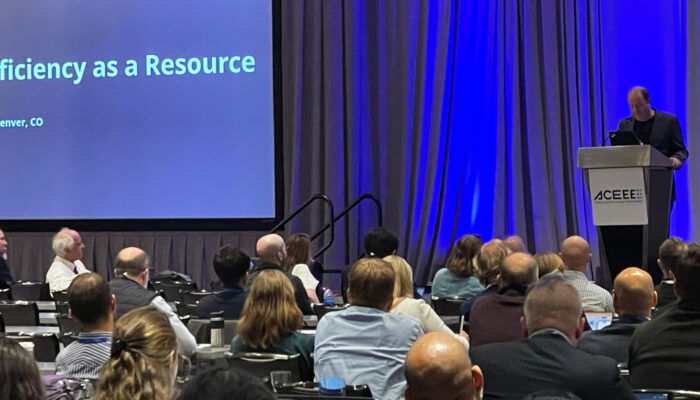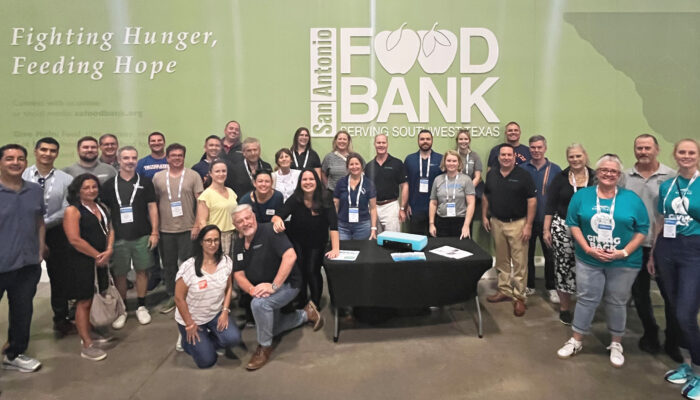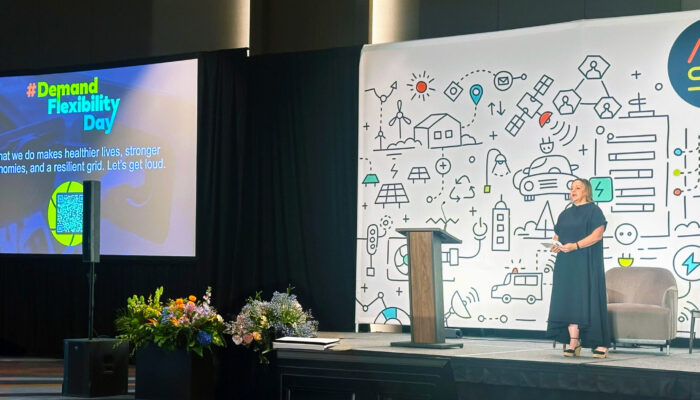
Viking Cold Solutions™, Inc.
10335 Landsbury Drive
Suite 350
Houston, TX 77099
United States of America
Telephone: +1.832.781.2653
Facsimile: +1.954.239.1141
Simply enter your email address, hit “Submit”, and we’ll keep you up to date with our news.
 Exploring the Future of Grid Resiliency and Efficiency at ACEEE’s 2025 EER Conference
Exploring the Future of Grid Resiliency and Efficiency at ACEEE’s 2025 EER Conference
Jared Polis, Governor of Colorado Discussions about the future of the U.S. power grid took center stage last week at the 13th biennial Energy Efficiency as a Resource (EER) Conference in Denver, hosted by the American Council for an Energy-Efficient Economy (ACEEE). During the opening session, Colorado Governor Jared Polis highlighted the state’s leadership in clean energy innovation and collaboration with utilities to strengthen grid resilience. His remarks reflected one of the conference’s major themes: as federal programs scale back, states and local utilities are stepping up with new incentives to drive efficiency, flexibility, and reliability across the grid. A key topic throughout the event was the expansion of demand response programs – now active in all 50 states – and the growing opportunities they create for businesses and energy users. Texas continues to stand out for offering the greatest payback on energy sold back to utilities, signaling how state-level initiatives can reward participation in grid balancing. Speakers also pointed to the increasing role of Thermal Energy Storage (TES) in the cold chain, as utilities nationwide recognize its ability to reduce peak demand and support decarbonization. Among the featured sessions was “Advancing Energy Efficiency and Grid Resilience with AI and Thermal Energy Storage,” where John Savage, VP of Sales at Viking Cold Solutions, joined fellow experts to discuss how AI-driven controls and TES technologies are reshaping demand-side management. Panelists explored how these tools enable cold storage and food distribution facilities to shift loads, optimize operations, and strengthen grid reliability – all while improving efficiency and cost savings. By the end of the session, one message was clear: demand flexibility will be essential to building a more resilient energy future. AI optimization, distributed storage, and innovative load management are rapidly moving from pilot projects to critical infrastructure. For Viking Cold Solutions and other leaders advancing energy efficiency, the conversation in Denver underscored a shared mission – to make the grid smarter, cleaner, and better prepared for tomorrow’s challenges.
 Feeding Hope: The GCCA and Viking Cold Solutions Partner to Help the San Antonio Food Bank Feed More Families
Feeding Hope: The GCCA and Viking Cold Solutions Partner to Help the San Antonio Food Bank Feed More Families
Viking Cold Solutions is in San Antonio this week at the 2025 Global Cold Chain Alliance (GCCA) Convention, where the focus is on energy efficiency, artificial intelligence, cybersecurity, and demand management. This annual event brings together leaders from across the industry to exchange ideas, share innovations, and explore ways to make temperature-controlled logistics more efficient and sustainable. Being here provides an opportunity to engage with peers, learn from best practices, and further strengthen our shared commitment to advancing energy-conscious solutions across the cold chain as well as in the local community. Texas ranks second in the nation for food insecurity, with one in six residents living in food-insecure households. The San Antonio Food Bank (SAFB) works tirelessly to fight hunger across Southwest Texas through food distribution, education, programs, and advocacy. Their mission goes beyond providing meals for today – they also equip individuals and families with the tools to become self-sufficient tomorrow. Each week, SAFB serves more than 100,000 people through its extensive network of partner agencies and innovative programs. When crisis strikes, that mission becomes even more critical. Recent flooding in July in the Hill Country once again highlighted the importance of community resilience. In emergencies, food is more than just sustenance – it’s comfort, stability, and hope. The San Antonio Food Bank responds swiftly, providing emergency food, water, and essential supplies, while rallying volunteers to support families through difficult times. Their ability to step up in moments of disaster reflects the strength of their network and the compassion that drives their work. To learn more about how you can support their disaster relief efforts, visit the San Antonio Food Bank website. In partnership with SAFB, Viking Cold Solutions has installed a Thermal Energy Storage (TES) system in the food bank’s main freezer designed to lower energy costs, improve food quality, and help the Food Bank extend its impact. By reducing utility expenses, TES technology allows SAFB to redirect the electricity savings into providing even more meals for the communities it serves. Key outcomes of this project include: Resilient & Flexible Energy Management: 865,000 BTUs of Thermal Energy Storage Energy Savings: 8,000 kWh per month Community Impact: 70,000 additional meals for San Antonians Covering 29 counties across Southwest Texas, the San Antonio Food Bank is a cornerstone in the fight against hunger. At Viking Cold Solutions, we remain committed to strengthening collaborations like this – helping food banks across North America reduce food insecurity and feed more families in need. The GCCA also showed its commitment this week to supporting local causes by volunteering at the San Antonio Food Bank on Monday. Almost 16,000 pounds of food was packed for distribution by GCCA volunteers resulting in 13,000 meals.
 Viking Cold Solutions Joins Industry Leaders at AESP Flex Connect Panel on Grid Resilience
Viking Cold Solutions Joins Industry Leaders at AESP Flex Connect Panel on Grid Resilience
James Bell and Dr. Crystal Miller, AESP Keynote Speaker and Head of Policy & Government Relations at Tribal Clean Energy At the AESP Flex Connect Conference in Salt Lake City this week, James Bell, President and CEO of Viking Cold Solutions, joined a panel of experts to discuss “Optimizing Refrigeration and Storage for Grid Resilience.” The panel brought together leaders in energy efficiency, demand flexibility, and distributed energy resources to share strategies, lessons learned, and real-world insights that can help both the grid and energy customers. Panelists explored the opportunities and challenges of implementing demand flexibility in sectors such as cold storage and refrigeration – industries with high, continuous energy needs. Discussion topics included identifying the most impactful, immediately achievable improvements; overcoming customer and industry barriers to adoption; and understanding the role of utility pricing and policy in driving change. Each speaker shared perspectives on customer engagement, technology adoption, and what it will take to make demand flexibility more attractive to industrial markets. James’ contribution focused on how Thermal Energy Storage (TES) paired with AI optimization can significantly reduce energy use and peak demand while improving operational reliability. He outlined real-world results showing 20%–35% lower energy consumption, up to 95% reductions in peak demand, and electrical cost savings of up to 50%. He also emphasized how AI’s predictive control and anomaly detection can help facilities act as virtual power plants (VPPs), supporting grid flexibility and renewable integration. Jennifer Szaro, AESP President & CEO The conversation continued with a robust 30-minute Q&A session with a large and highly engaged audience. Most questions centered on the demand flexibility of refrigeration loads, advanced controls, and the role of thermal energy storage in supporting grid resilience. Attendees were also eager to learn how AI can further enhance the management of refrigeration demand, offering predictive insights and enabling more effective participation in grid programs. The panel ended with a forward-looking discussion on the future of AI-driven demand flexibility, the potential for applications beyond refrigeration, and the importance of collaboration between technology providers, utilities, and program designers. The consensus: intelligent, flexible solutions are needed for meeting rising energy needs while building a more resilient and sustainable grid. The informative and impactful three-day 2025 AESP Flex Connect conference closed out on the main stage in Salt Lake City with a keynote address by Dr. Crystal Miller. Dr Miller is the Head of Policy and Government Relations for the Alliance for Tribal Clean Energy, and shared important insights into ways to advance clean energy and energy access for Indian Tribes. Her speech and the Q&A that followed was another great example of how AESP brings people together to solve energy problems through collaboration and business cooperation – a fitting highlight for Demand Flexibility Day 2025!